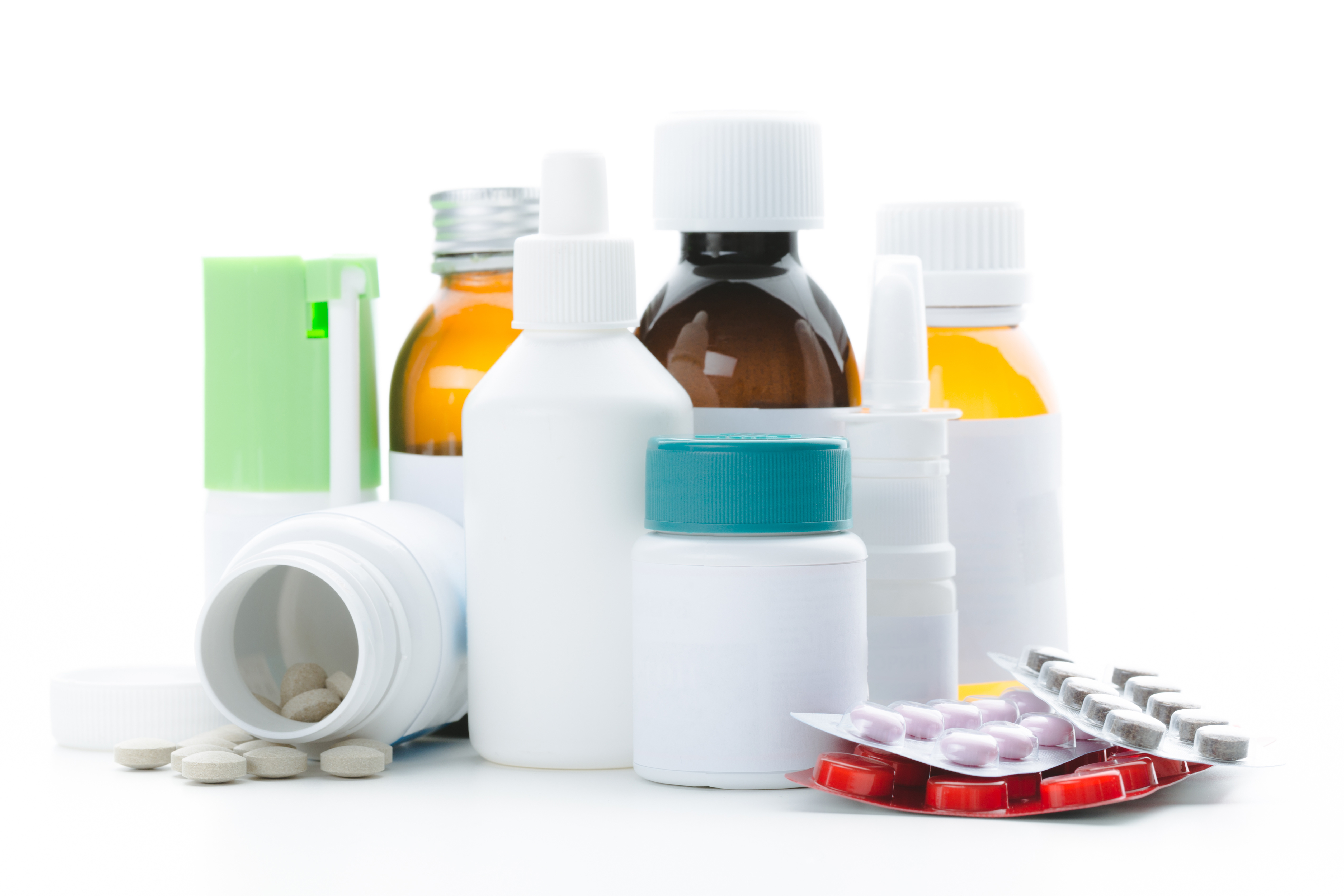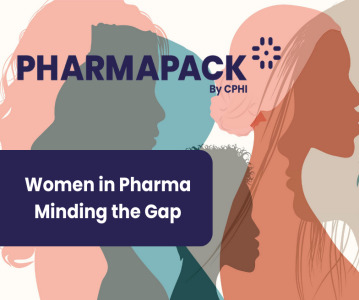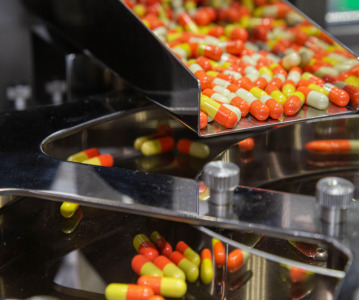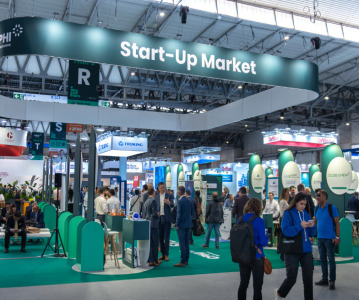Plastic: pharma's friend or foe?

Love it or loathe it, plastic is here to stay, but that doesn't let the pharmaceutical industry off the hook.
It's taken its time, but the issues surrounding the use and disposal of plastic have finally made the headlines. Although the food industry seems to be bearing the brunt of the blame for the mountains of nonbiodegradable plastic being thrown into landfill sites or carelessly tossed to the wind by consumers, is the pharmaceutical industry contributing to what is clearly a global and critical issue? And if so, what can be done?
Ahead of Pharmapack 2019 (6 & 7 February, Paris, France), Gregor Anderson, Managing Director of Pharmacentric Solutions, provides his insight into the role and value of plastic in the pharmaceutical industry and what, if any, are the alternatives.
In what ways are plastics used by the pharmaceutical industry?
"The pharma industry's use of plastics is considerably less than the food industry. It uses plastics for the protection and delivery of its medicines, and this includes laminates (for example, for tablets, pouches, sachets) and devices (such as injectors, inhalers).
"Every medicine needs some form of protection - typically from moisture - and this extends the shelf life of the medicine. In addition, effective packaging design can enhance patient compliance. Plastics offer superior performance and quality at a reasonable cost."
Should the pharmaceutical industry make changes to reduce its use of plastic?
"Pharmaceutical manufacturers have to meet a range of regulatory requirements to ensure medicines reach patients with the same quality as they left the factory. There must be no risk of extractables and leachables interacting with the medicine throughout the shelf life and the shelf life must meet the demands of the supply chain - often a shelf life of 18-24 months is expected.
"Unlike food/fast-moving consumer goods, medicines are not marketed via the packaging; they are marketed on the efficacy of the molecule and the recommendation of the healthcare professional (via the prescription/script). As such, the packaging is purely functional and the packaging used is optimised.
"The packaging used in the pharmaceutical industry has to have detailed provenance (virgin materials only) and have a premium pricing from materials suppliers because of these quality requirements. This drives packaging designers to optimise the use of materials. There is, however, always the opportunity to continue to reduce the use of plastic and ‘Green Guides’ are a way for packaging engineers to challenge the design, specification and delivery of pack solutions. Green Guides should also be shared with suppliers as they are part of the end-to-end supply chain."
How might pharmaceutical companies justify their use of plastic?
"Pharma has to meet regulatory requirements and satisfy customer expectations. The energy/CO2 used to make medicines often far outweighs that of the packaging used to protect it. The value of the medicine often far outweighs that of the packaging and as such this medicine needs to be protected from manufacture to point of use. Ensuring that packaging adds value to the patient use is also vital and this extends to features such as anticounterfeiting and child resistance (both enhance medicine safety and both can use polymer-based technologies)."
Will changes be initiated internally (from within individual companies) or externally (from, for example, demand/pressure from customers)?
"Changes will come from both. Some countries are challenging the amount of packaging - most of these, however, are driven by regulatory requirements - and some of the materials used (i.e., PVC). The industry has huge amounts of data derived from testing of existing materials (i.e., stability) and considerable fixed capacity with packaging machines. Changes in materials and pack designs will add enormous complexity and investment so I’d challenge changing existing (already approved) pack formats.
"I would also like to see the industry launch new molecules in optimised materials (that have less environmental impact/or easier to recycle). On this point, I’d like to highlight the issue of recycling. With medicines the risk of contaminated plastic (from the medicine) is high so realistically the value of recycling it has to be really understood. The industry has to come together regarding the optimised use of materials and I’d like to see a Green Standard that the industry could follow. Remember, the packaging in pharma doesn’t sell the medicine ... the molecule is king. We, therefore, all use similar materials and processes for packaging our medicine platforms and so we could work together on this to drive change internally."
Do you think pharmaceutical companies are willing to put environmental issues ahead of profits?
"It’s all about performance of packaging, not profit. They already are aware of sustainability (look at any corporate social responsibility part of the annual reports) and have a ream of initiatives. Remember packaging is a small part of the picture here ... tackle the CO2 ‘biggies’ - propellants/waste from patients not taking their drugs (estimate is 50% of drugs are not taken effectively or at all!). Pharma needs to also work with its suppliers to ensure their manufacturing processes are efficient; for example, less waste, efficient machines."
What alternatives to plastics are available to pharmaceutical companies and how reasonable/effective are they?
"There aren’t any/many. If there were replacement materials the industry will be using them. I’ve seen plastic replaced by card, which is good practice. Again, Green Guides could challenge every project to minimise the use of plastics and build a Life Cycle Analysis (LCA) for every packaging solution/decision. LCA is a vital tool in this process, but it also has to be tied in with effective recycling schemes for medicines."
What innovations and trends do you see regarding the use of plastic in the pharmaceutical industry?
A limited portfolio of materials are being used (which is good). Heritage materials are being challenged (PVC). One great initiative I’ve seen is GSK recycling inhalers. It has been a real challenge for them, but it's a start and encourages patients to return their inhalers, which can help encourage improved compliance. Unused propellants are extracted/recycled and plastics responsibly disposed of. More companies need to input into these schemes and I’m a huge fan of these as we have to make pharma packaging to demanding standards and if the used packaging can be returned it helps ‘complete the cycle’."
See Gregor Anderson at this year's Pharmapack where his conference (6 February, 15:55-16:20) will consider Sustainability Expectations Future Pharmaceutical Packaging and Devices.
Related News
-
News Pharmapack Awards 2024 Patient-Centric Design Award Winner – Dr Ferrer BioPharma
The 2024 Pharmapack Awards celebrated the best in innovation and design for the pharmaceutical packaging and drug delivery industry on January 24, 2024. -
News Women in Pharma: Minding the Gap at Pharmapack 2024
2024 marks the first year Pharmapack will host a Diversity track dedicated to bridging the gap within the pharmaceutical packaging and drug delivery sector. The track includes a panel discussion on 'Enabling Diversity in the Workplace,' focused... -
News Pharmapack Awards 2024 - Celebrating Packaging and Drug Delivery Innovation
The 2024 Pharmapack Innovation Awards ceremony celebrated the best in pharmaceutical packaging and drug delivery innovation at all levels. The awards were held on January 24, 2024 at the Paris Expo Porte de Versailles. -
News Pharmapack 2024 - From the Floor
Paris once again welcomes Europe’s leading trade show in pharmaceutical packaging and drug delivery innovation. Join our content team as Pharmapack 2024 opens its doors to leading experts and innovators in pharmaceutical packaging and drug delive... -
News CPHI Barcelona 2023: Partnering for Success – Managing Outsourcing Relationships to Optimise Manufacturing Operations
During CPHI Barcelona 2023, insightful content sessions offered attendees the chance to explore trending topics with expert speakers and panellists. Here, we summarise what the pharma industry and supply chain are talking about the most. -
News CPHI Barcelona 2023: Loading Potential – Artificial Intelligence for Pharma Manufacturing
During CPHI Barcelona 2023, insightful content sessions offered attendees the chance to explore trending topics with expert speakers and panellists. Here, we summarise what the pharma industry and supply chain are talking about the most. -
News Pharmaceutical industry supports COP28 health stance in joint statement
As COP28 takes place over this week in Dubai, UAE, several bodies in the pharmaceutical and health industries have come together to announce support of key movements in sustainability in the sector, and to recognise sustainability as a health issue.&nb... -
News CPHI Podcast Series: Start-ups take centre stage at CPHI Barcelona
The first episode of the CPHI Podcast Series since we attended CPHI Barcelona in October covers the Start-up market at the event, with expert Matthew Wise joining Editor Lucy Chard to discuss the event.
Position your company at the heart of the global Pharma industry with a CPHI Online membership
-
Your products and solutions visible to thousands of visitors within the largest Pharma marketplace
-
Generate high-quality, engaged leads for your business, all year round
-
Promote your business as the industry’s thought-leader by hosting your reports, brochures and videos within your profile
-
Your company’s profile boosted at all participating CPHI events
-
An easy-to-use platform with a detailed dashboard showing your leads and performance





.png)

